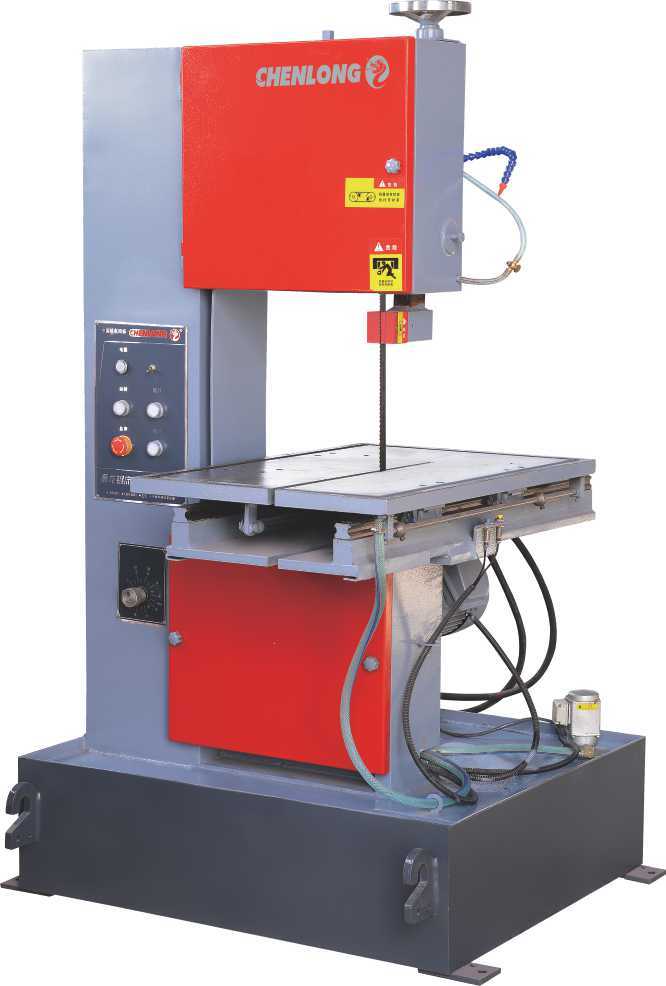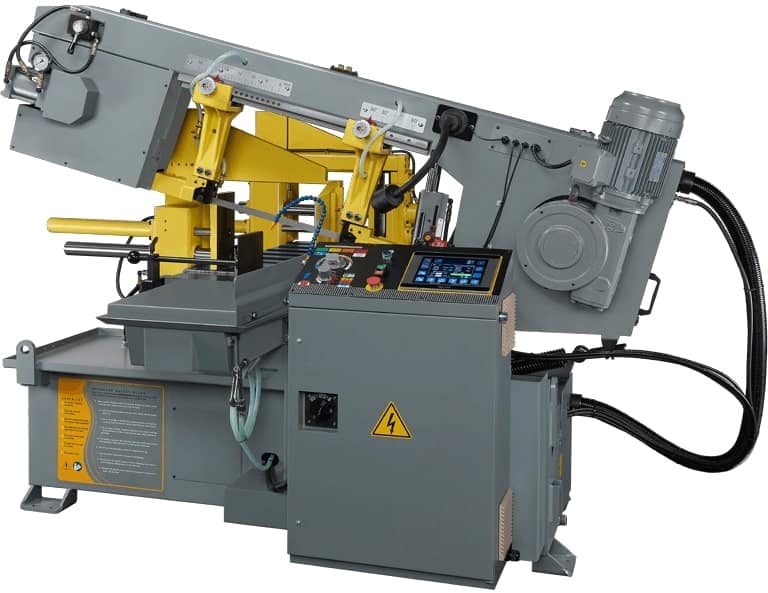![Bandsaw Machine - Definition, Types, Parts, Uses, Working & Advantages [Complete Guide]](https://engineeringlearn.com/wp-content/uploads/2022/02/Bandsaw-Machine-1024x539.jpg)
Definition of Band Saw Machine
Band Saw – Definition, Types, Parts, Uses, Working, Advantages & Disadvantages :- A bandsaw machine, as the name of this machine suggests, is a saw that consists of a continuous metal band known as the bandsaw blade that rides on two wheels that are rotating in the same plane. A bandsaw machine consists of a round and serrated steel blade and can be employed to process wood, metal, and various other raw materials. A bandsaw machine can be employed for making straight, irregular, or curved shape cuts, depending upon the lateral flexibility and the width of the band. Bandsaws are mostly utilized for making irregular cuts. As the result of evenly distributed tooth load, bandsaw machines are capable of producing a uniform cutting action. The source of power for these bandsaw machines can be one of the many sources such as wind, steam, or electric power. Electric power is the most preferred source of power nowadays.
Types of Bandsaw Machine
There are various ways of classifications of bandsaw machines which can be seen elsewhere as well. The most basic and general way of classifying band saw machines is by their mechanism of mounting, according to which there are two types of bandsaw machines, vertical and horizontal.
1. Vertical Bandsaw Machine

The cutting position of the toothed steel blade in a vertical band saw machine is vertical. Generally, a typical vertical bandsaw machine is powered by an electric motor through a belt transmission mechanism. The belt here creates room for adjustment of the blade speed. The steel blade in a vertical bandsaw machine rotates over a fixed track between the idler wheel, which is mounted above the worktable and the drive wheel is mounted under the work table, which cuts into the sides of the stock material. To make the cut in the stock, the stock is moved against the blade. The table can be tilted front-to-back or sideways in order to allow mitered cuts. Internal cutting is also possible in vertical bandsaw machines as the machine can weld its own blades.
2. Horizontal Bandsaw Machine

Typically, the Horizontal bandsaw machines are floor-mounted machines that are employed for jobs like simple cutting of solid steel, tubing, and other odd-shaped raw material stock. The bandsaw blades in horizontal bandsaw machines are also driven by an electric motor. A belt and pulley mechanism is employed to drive the motor. This mechanism creates room for the speed of the blades to be adjusted in discrete stages according to requirements.
The cutting position of the bandsaw steel blade in a horizontal bandsaw machine is horizontal and it makes cuts into the stock with a downward motion. The drive and idler wheels are positioned along the length of the machine on the machine frame, which pivots from a corner on the sawing machine bed. The material stock which is to be cut is mounted in a vise mounted on the bed of the machine.
The vertical bandsaw machine is considered to be more versatile and can be employed for contour cutting, filing, and polishing, as well as for simple stock cutting.
Working of Band Saw Machine
In a bandsaw machine, the workpieces are fed into the cutting edge of the machine. The bandsaw machine cuts the workpiece being fed by drawing a continuous toothed metal band across the workpiece at high speeds. The toothed steel blade on the bandsaw machine is driven by a drive wheel and is supported by an idler wheel. Because each tooth on the bandsaw blade is a precision cutting tool, the accuracy of machining can be expected to be high at close tolerances. This ability of the bandsaw machine eliminates or minimizes the utilization of many secondary machining operations. In addition to that, the chip removal process is very fast. When the bandsaw machine is turned on, the operator raises the saw and lowers the blade on the clamped material workpiece, cutting it through as the band blade moves. The bandsaw automatically switches off after the cutting operation is completed.
In metal cutting jobs on a bandsaw machine, a constant flow of liquid known as coolant over the bandsaw blade is required as a lubricant in order to keep the blade cool as well as to avoid the blade being damaged due to smearing. Coolants hence prolong machine life as well as blade life and increase accuracy. Sometimes, brushes or brush wheels are employed for the removal of cut chips. Band speeds on a bandsaw machine typically range from 40 ft p.m. to 5000 ft p.m.
In a vertical bandsaw machine, the blade is lowered onto the workpiece while in a horizontal bandsaw machine, the workpiece is fed to the blade.
Parts of Band Saw Machine
- The chips generated during the cutting process of the workpiece are harmful to human health. Therefore, in order to avoid such impacts on human health, a metal-cutting bandsaw is generally equipped with brushes or brush wheels in order to prevent chips from getting caught between the blade teeth and causing damage.
- Also, in order to cool the saw blade, the band saw machine must be designed and equipped with a cutting fluid circuit containing coolant liquid. The coolant liquid can wash away the waste material chips while keeping the saw blade cool as well as properly lubricated.
- Furthermore, the band saw machines which are controlled by PLC or CNC systems can be partly automated as well.
- Some automatic band saw machines that are equipped with digitally operated control units cannot just cut faster, but also cut in a more precise manner with higher accuracy, and eventually perform complex cutting operations like bevel cutting tasks.
- As a result, most of the modern bandsaw machines are pre-equipped with digital CNC controllers in order to adapt to today’s manufacturing requirements and standards.
Applications of Band Saw
In the modern manufacturing industry, band sawing operation is widely employed in various applications. It is most commonly utilized in
- Metal processing
- Wood processing
- Cutting of a variety of other materials.
Advantages of Band Saw
The advantages of a band saw machine include
- Uniform and evenly distributed cutting action due to uniformly distributed tooth loads
- The capability to make irregular or curved cuts, similar to a jigsaw machine.
- The band saw machine design ensures having a better distribution of load and ultimately provides better performance.








0 Comments